 |
|
|
HOME
|
US Navy -
ships
|
US Navy - air
units
|
USMC - air
units
|
International
Navies
|
Weapon Systems
|
Special Reports |
|
|
US Navy Nimitz class Aircraft Carrier - CVN |
|
 |
|
| 04/25 | |
| Ships: | |
|
|
| Specifications: | |
|
|
|
Design: The Nimitz-class aircraft carriers were ordered to supplement the aircraft carriers of the Kitty Hawk class and Enterprise class, maintaining the strength and capability of the U.S. Navy after the older carriers were decommissioned. The ships were designed to be improvements on previous U.S. aircraft carriers, in particular the Enterprise and Forrestal-class supercarriers, although the arrangement of the ships is relatively similar to that of the Kitty Hawk class. Among other design improvements, the two reactors on Nimitz-class carriers take up less space than the eight reactors used on Enterprise. Along with a more generally improved design, this means that Nimitz-class carriers can carry 90% more aviation fuel and 50% more ordnance when compared to the Forrestal class. The U.S. Navy has stated that the carriers could withstand three times the damage sustained by the Essex class inflicted by Japanese air attacks during World War II. The hangars on the ships are divided into three fire bays by thick steel doors that are designed to restrict the spread of fire. This addition has been present on U.S. aircraft carriers since World War II, after the fires caused by Kamikaze attacks. The first ships were designed around the time of the Vietnam War, and certain aspects of the design were influenced by operations there. To a certain extent, the carrier operations in Vietnam demonstrated the need for increased capabilities of aircraft carriers over their survivability, as they were used to send sorties into the war and were therefore less subject to attack. As a result of this experience, Nimitz carriers were designed with larger stores of aviation fuel and larger magazines in relation to previous carriers, although this was partly as a result of increased space available by the new design of the ships' propulsion systems. A major purpose of the ships was initially to support the U.S. military during the Cold War, and they were designed with capabilities for that role, including using nuclear power instead of oil for greater endurance when deployed in blue water, and the ability to make adjustments to the carriers' weapons systems on the basis of new intelligence and technological developments. They were initially categorized only as attack carriers, but ships have been constructed with anti-submarine capabilities since USS Carl Vinson. As a result, the ships and their aircraft are now able to participate in a wide range of operations, which can include sea and air blockades, mine laying, and missile strikes on land, air and sea. Because of a design flaw, ships of this class have inherent lists to starboard when under combat loads that exceed the capability of their list control systems. The problem appears to be especially prevalent on some of the more modern vessels. This problem has been previously rectified by using damage control voids for ballast, but a solution using solid ballast which does not affect the ship's survivability has been proposed. Construction: All ten Nimitz-class aircraft carriers were constructed between 1968 and 2006 at Newport News Shipbuilding Company, in Newport News, Virginia, in the largest drydock in the western hemisphere, dry dock 12, now 2,172 feet (662 m) long after a recent expansion. Since USS Theodore Roosevelt, the aircraft carriers were manufactured in modular construction (USS George H.W. Bush was constructed from 161 'super-lift' modules). This means that whole sections could be welded together with plumbing and electrical equipment already fitted, improving efficiency. Using gantry cranes, the modules were lifted into the dry dock and welded. In the case of the bow section, these can weigh over 1,500,000 pounds (680 t). This method was originally developed by Ingalls Shipbuilding and increases the rate of work because much of the fitting out does not have to be carried out within the confines of the already finished hull. Propulsion: All ships of the class are powered by two A4W nuclear reactors, kept in separate compartments. They power four propeller shafts and can produce a maximum speed of over 30 knots (56 km/h) and maximum power of 260,000 bhp (190 MW). The reactors produce heat through nuclear fission which heats water. This is then passed through four turbines (manufactured by General Electric) which are shared by the two reactors. The turbines power the four bronze screws, each with a diameter of 25 feet (7.6 m) and a weight of 66,000 pounds (30 t). Behind these are the two rudders which are 29 feet (8.8 m) high and 22 feet (6.7 m) long, and each weigh 110,000 pounds (50 t). The Nimitz-class ships constructed since USS Ronald Reagan also have bulbous bows in order to improve speed and fuel efficiency by reducing Wave-making resistance. As a result of the use of nuclear power, the ships are capable of operating continuously for over 20 years without refueling and are predicted to have a service life of over 50 years. Armament + protection: In addition to the aircraft carried on board, the ships carry defensive equipment for use against missiles and hostile aircraft. These consist of either three or four NATO RIM-7 Sea Sparrow missile launchers designed for defense against aircraft and anti-ship missiles as well as either three or four 20 mm Phalanx CIWS missile defense cannon. USS Ronald Reagan has none of these, having been built with the RIM-116 Rolling Airframe Missile system, two of which have also been installed on USS Nimitz and USS George Washington. These will be installed on the other ships as they return for Refueling and Complex Overhaul (RCOH). Since USS Theodore Roosevelt, the carriers have been constructed with 2.5 in (64 mm) Kevlar armor over vital spaces, and earlier ships have been retrofitted with it: Nimitz in 1983-1984, Eisenhower from 1985-1987 and Vinson in 1989. The other countermeasures the ships use are four Sippican SRBOC (super rapid bloom off-board chaff) six-barrel MK36 decoy launchers, which deploy infrared Flare (countermeasure) and chaff to disrupt the sensors of incoming missiles; an SSTDS torpedo defense system; and an AN/SLQ-25 Nixie torpedo countermeasures system. The carriers also use AN/SLQ-32(V) Radar jamming and deception systems to detect and disrupt hostile radar signals in addition to the electronic warfare capabilities of some of the aircraft on board. The presence of nuclear weapons on board U.S. aircraft carriers since the end of the Cold War has neither been confirmed nor denied by the U.S. government. As a result of this, as well as concerns over the safety of nuclear power, the presence of a U.S. aircraft carrier in a foreign port has occasionally provoked protest from local people, for example when USS Nimitz docked in Chennai, India, in 2007. At that time, the Strike Group commander Rear Admiral John Terence Blake stated that: "The U.S. policy is that we do not routinely deploy nuclear weapons on board Nimitz." In May 2013, George H.W. Bush conducted the first carrier-borne end-to-end at-sea test of the Surface Ship Torpedo Defense System (SSTDS). The SSTDS combines the passive detection of the Torpedo Warning System (TWS) that finds, classifies, and tracks torpedoes with the hard-kill capability of a Countermeasure Anti-Torpedo (CAT), an encapsulated miniature torpedo designed to locate, home in on, and destroy hostile torpedoes. This increases protection against wake-homing torpedoes like the Type 53 that don't respond to acoustic decoys. The pieces of the SSTDS are engineered to locate and destroy incoming torpedoes in a matter of seconds. Each system includes one TWS and 8 CATs. Initial operational capability (IOC) is planned for 2019 and all aircraft carriers are to be outfitted by 2035. Carrier Air Wing (CVW): In order for a carrier to deploy, it must embark one of ten Carrier Air Wings (CVW). The carriers can accommodate a maximum of 130 F/A-18 Hornets or 85-90 aircraft of different types, but current numbers are typically 64 aircraft. Although the air wings are integrated with the operation of the carriers they are deployed to, they are nevertheless regarded as a separate entity. As well as the aircrew, the air wings are also made up of support personnel involved in roles including maintenance, aircraft and ordnance handling and emergency procedures. Each person on the flight deck wears color-coded clothing to make his role easily identifiable. A typical carrier air wing can include 24-36 F/A-18E or F Super Hornets as strike fighters; two squadrons of 10–12 F/A-18C Hornets, with one of these often provided by the U.S. Marine Corps (VMFA), also as strike fighters; 4-6 EA-18G Growlers for electronic warfare; 4-6 E-2C or D Hawkeyes for airborne early warning (AEW), C-2 Greyhounds used for logistics (to be replaced by MV-22 Ospreys); and a Helicopter Antisubmarine Squadron of 6-8 SH-60F and HH-60H Seahawks. Aircraft that have previously operated from Nimitz-class carriers include F-4 Phantoms, RA-5C Vigilantes, RF-8G Crusaders, F-14 Tomcats, S-3 Vikings, A-7 Corsair II and A-6E Intruder aircraft. Flight deck and aircraft facilities: The flight deck is angled at nine degrees, which allows for aircraft to be launched and recovered simultaneously. This angle of the flight deck was reduced slightly in relation to previous carriers, as the current design improves the air flow around the carrier. Four steam catapults are used to launch fixed-wing aircraft, and four arrestor wires are used for recovery. The two newest carriers, Ronald Reagan and George H.W. Bush, have only three arrestor wires each, as the fourth was used infrequently on earlier ships and was therefore deemed unnecessary. This CATOBAR arrangement allows for faster launching and recovery as well as a much wider range of aircraft that can be used on board compared with smaller aircraft carriers, most of which use a simpler STOVL arrangement without catapults or arrestor wires. The ship's aircraft operations are controlled by the air boss from Primary Flight Control or Pri-Fly. Four large elevators transport aircraft between the flight deck and the hangars below. These hangars are divided into three bays by thick steel doors that are designed to restrict the spread of fire. Design differences within the class: While the designs of the final seven ships (beginning with USS Theodore Roosevelt) are slightly different from those of the earlier ships, the U.S. Navy considers all ten carriers as a single class. When the older carriers come in for Refueling and Complex Overhaul (RCOH), their nuclear power plants are refueled and they are upgraded to the standards of the later carriers. Other modifications may be performed to update the ships' equipment. The ships were initially classified only as attack carriers but have been constructed with anti-submarine capabilities since USS Carl Vinson. These improvements include better radar systems and facilities which enable the ships to operate aircraft in a more effective Anti-submarine warfare role, including the fitting of common undersea picture (CUP) technology which uses sonar to allow for better assessment of the threat from submarines. The changes included better support for S-3 Viking ASW patrol planes and SH-60F Seahawk helicopters with dipping sonar systems. USS Theodore Roosevelt and later carriers have slight structural differences from the earlier Nimitz carriers such as improved protection for ordnance stored in their magazines. Other improvements include upgraded flight deck ballistic protection, first installed on USS George Washington, and the high-strength low-alloy steel (HSLA-100) used for constructing ships starting with USS John C. Stennis. More recently, older ships have had their flight decks upgraded with a new non-slip material fitted on new-build ships, to improve safety for both crew members and aircraft. The final carrier of the class, USS George H.W. Bush, was designed as a "transition ship" from the Nimitz class to the replacement Gerald R. Ford class. Bush incorporates new technologies including improved propeller and bulbous bow designs, a reduced Radar cross-section and electronic and environmental upgrades. As a result, the ship's cost was $6.2 billion. The earlier Nimitz-class ships each cost around $4.5 billion. To lower costs, some new technologies and design features were also incorporated into USS Ronald Reagan, the previous carrier, including a redesigned island. source: wikipedia |
|
|
class + detail images for more images go to the individual ship-site |
|
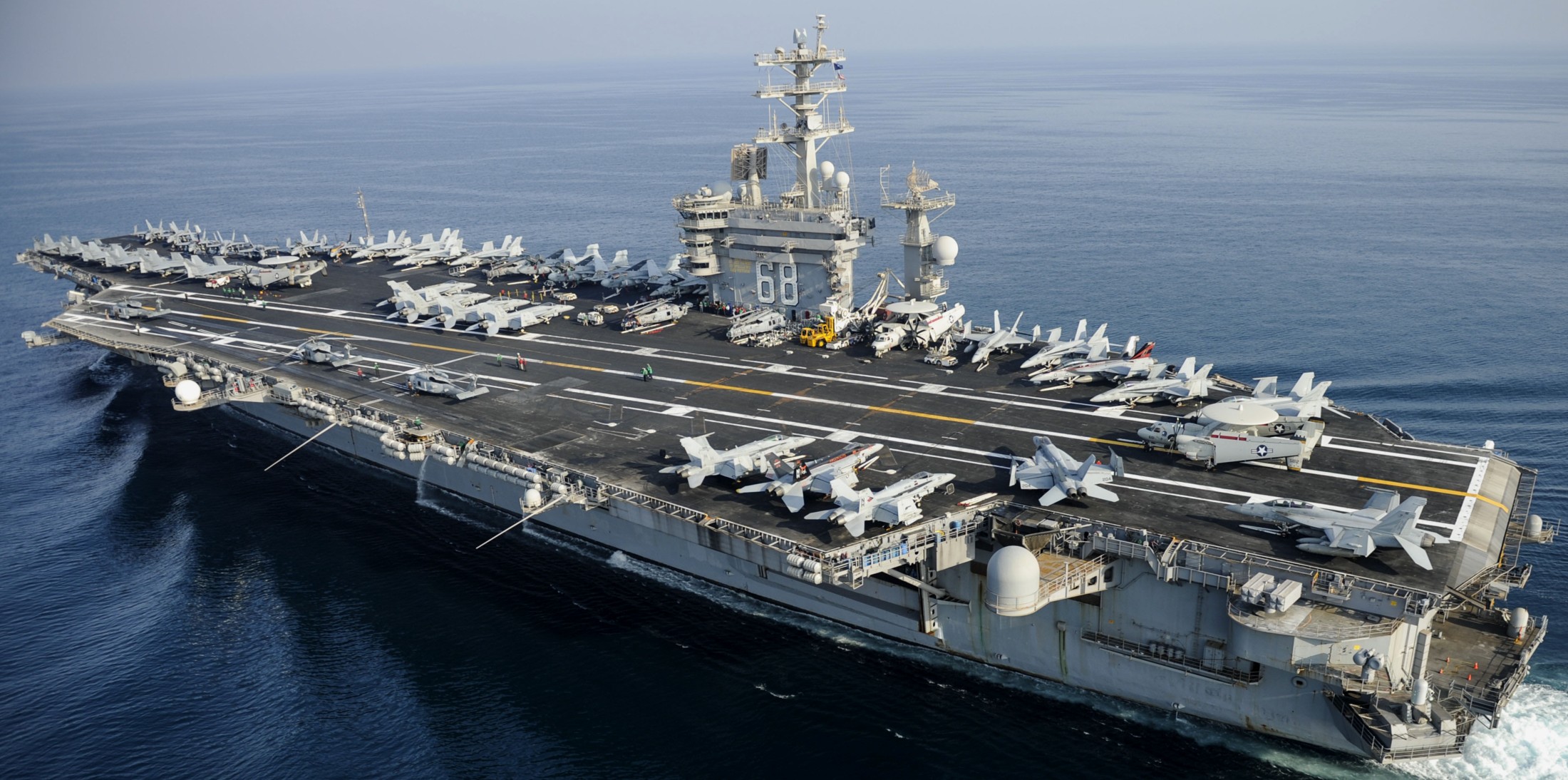 USS Nimitz (CVN 68) 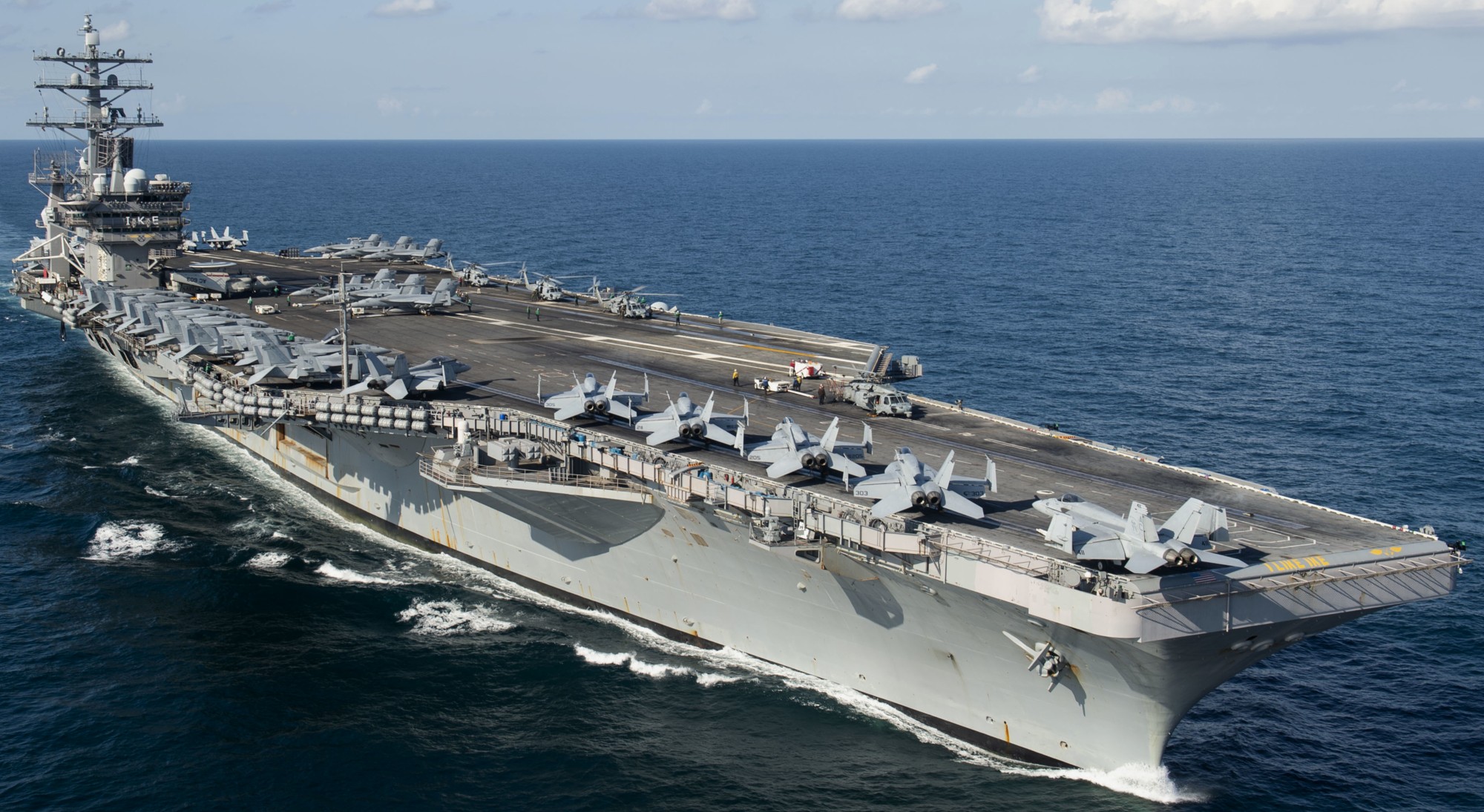 USS Dwight D. Eisenhower (CVN 69) 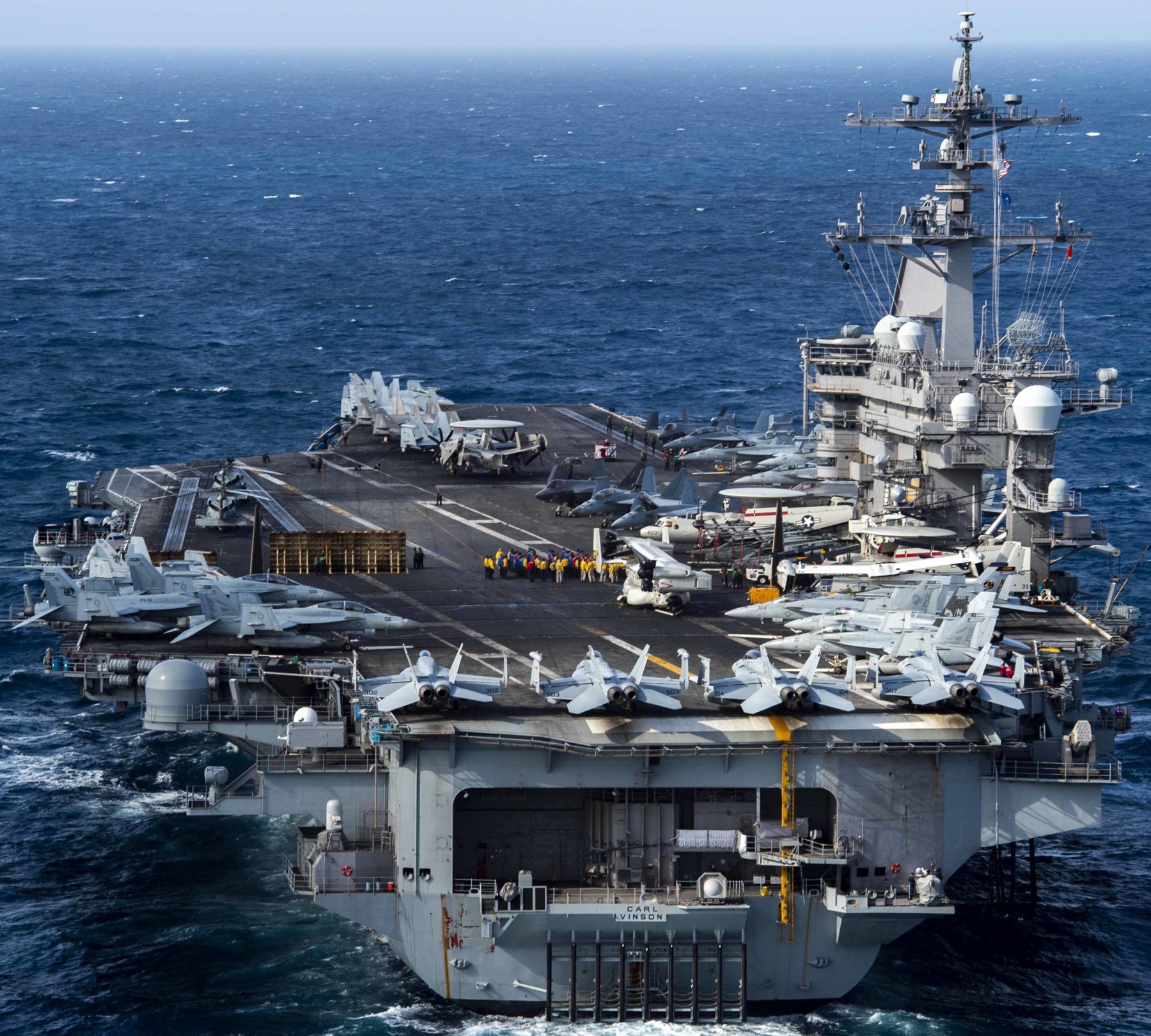 USS Carl Vinson (CVN 70) 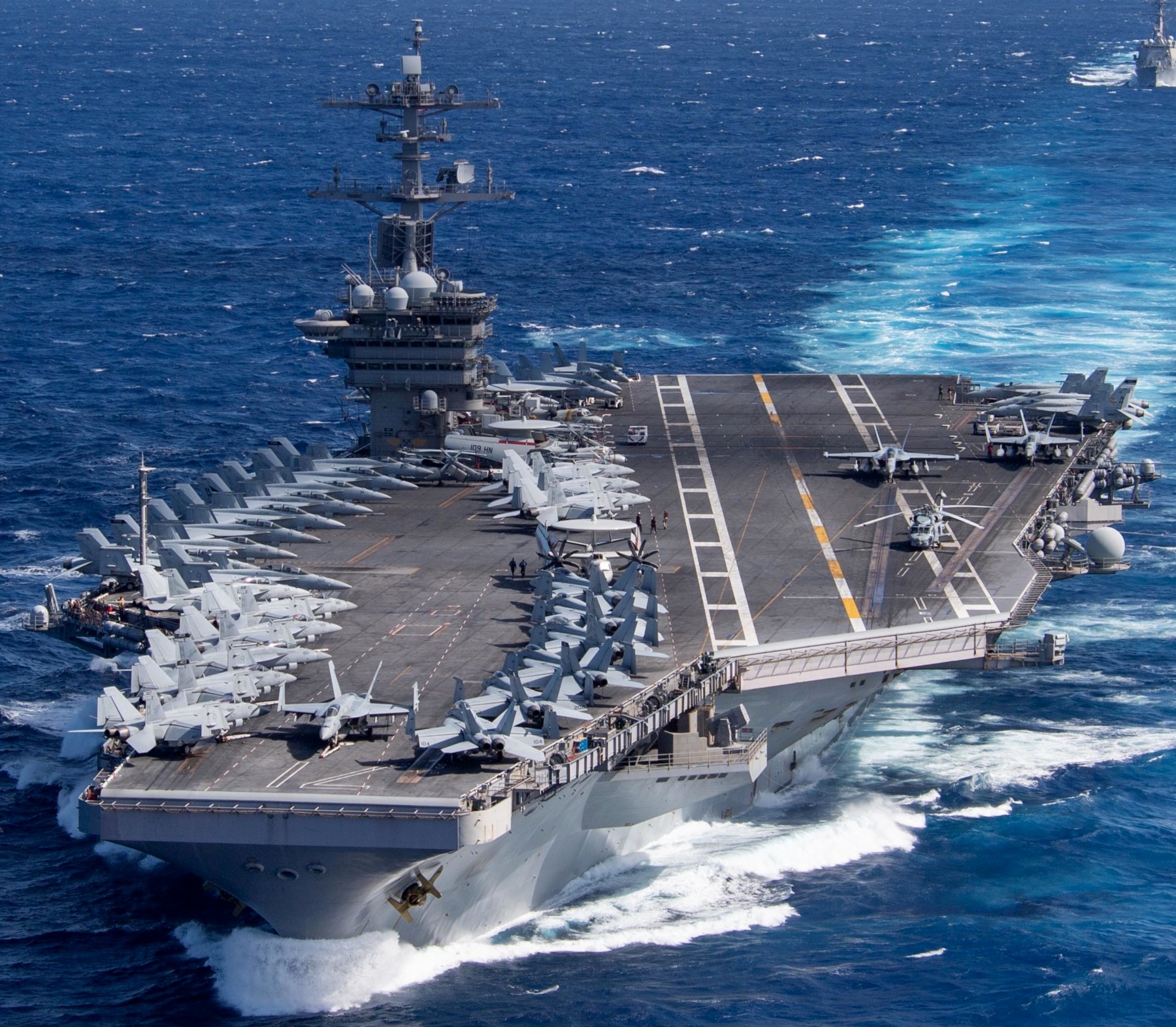 USS Theodore Roosevelt (CVN 71) 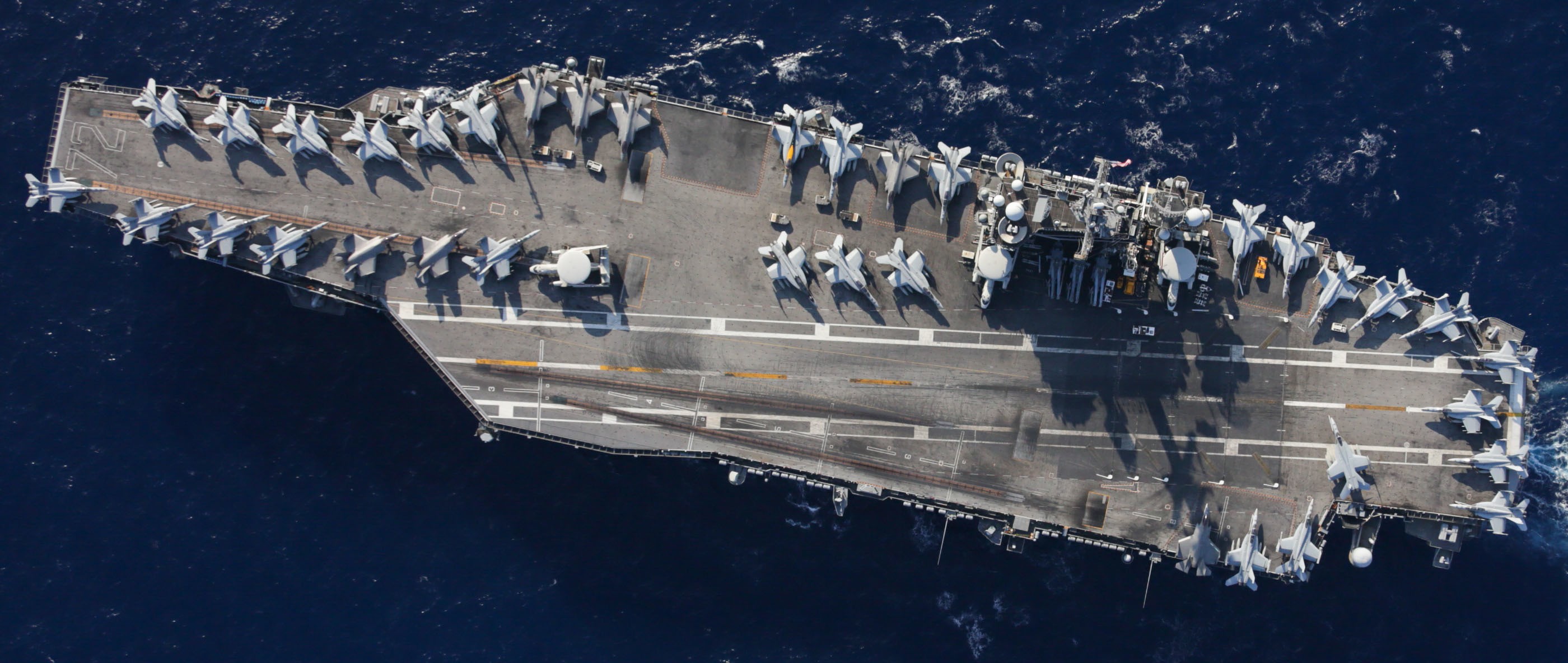 USS Abraham Lincoln (CVN 72) 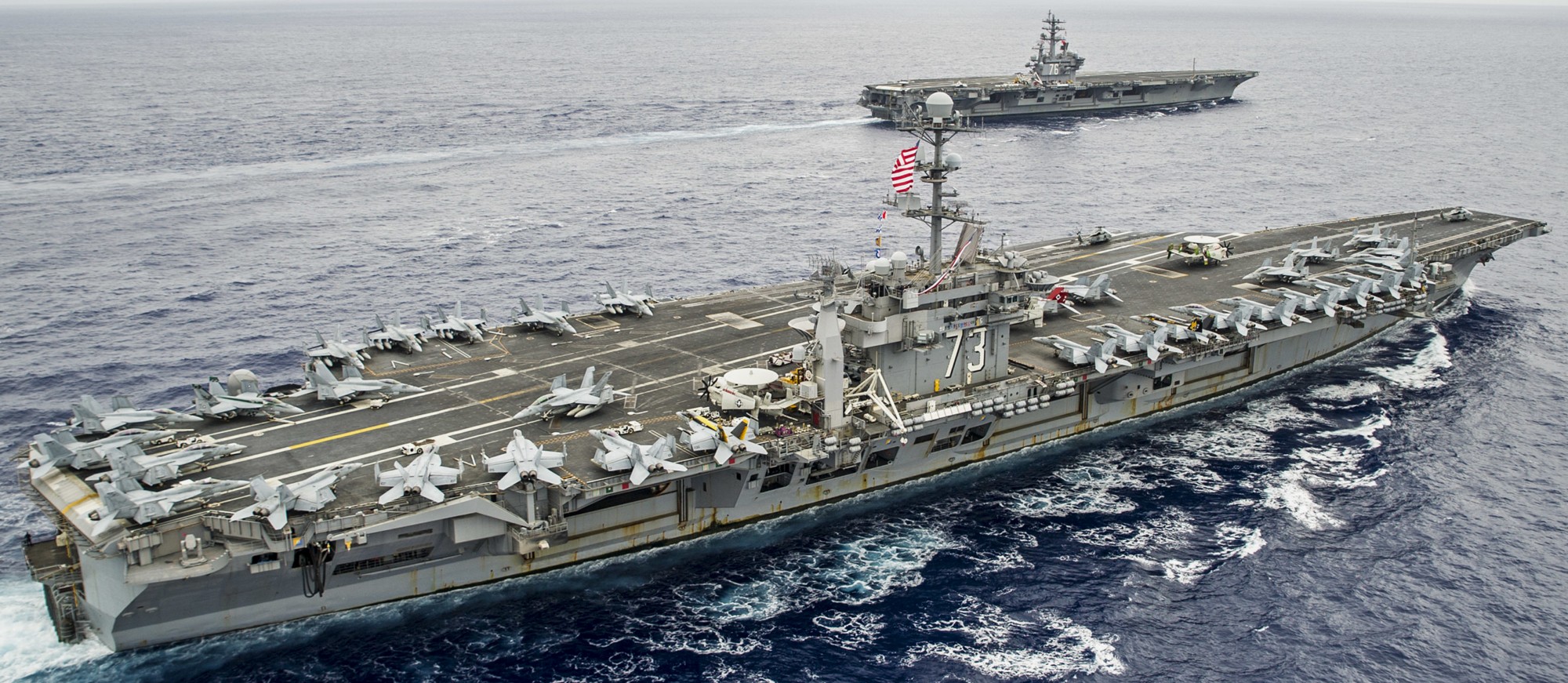 USS George Washington (CVN 73) 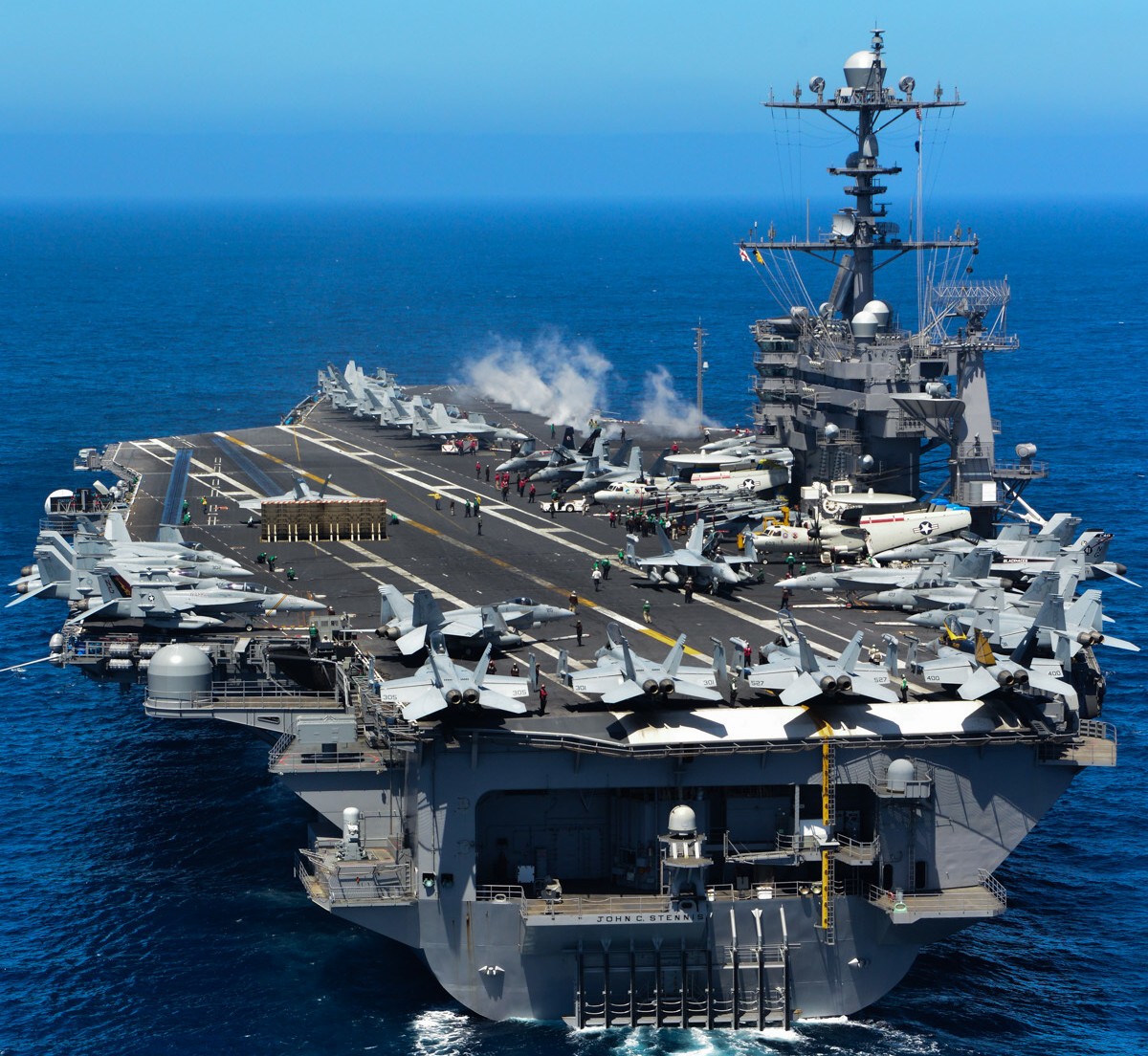 USS John C. Stennis (CVN 74) 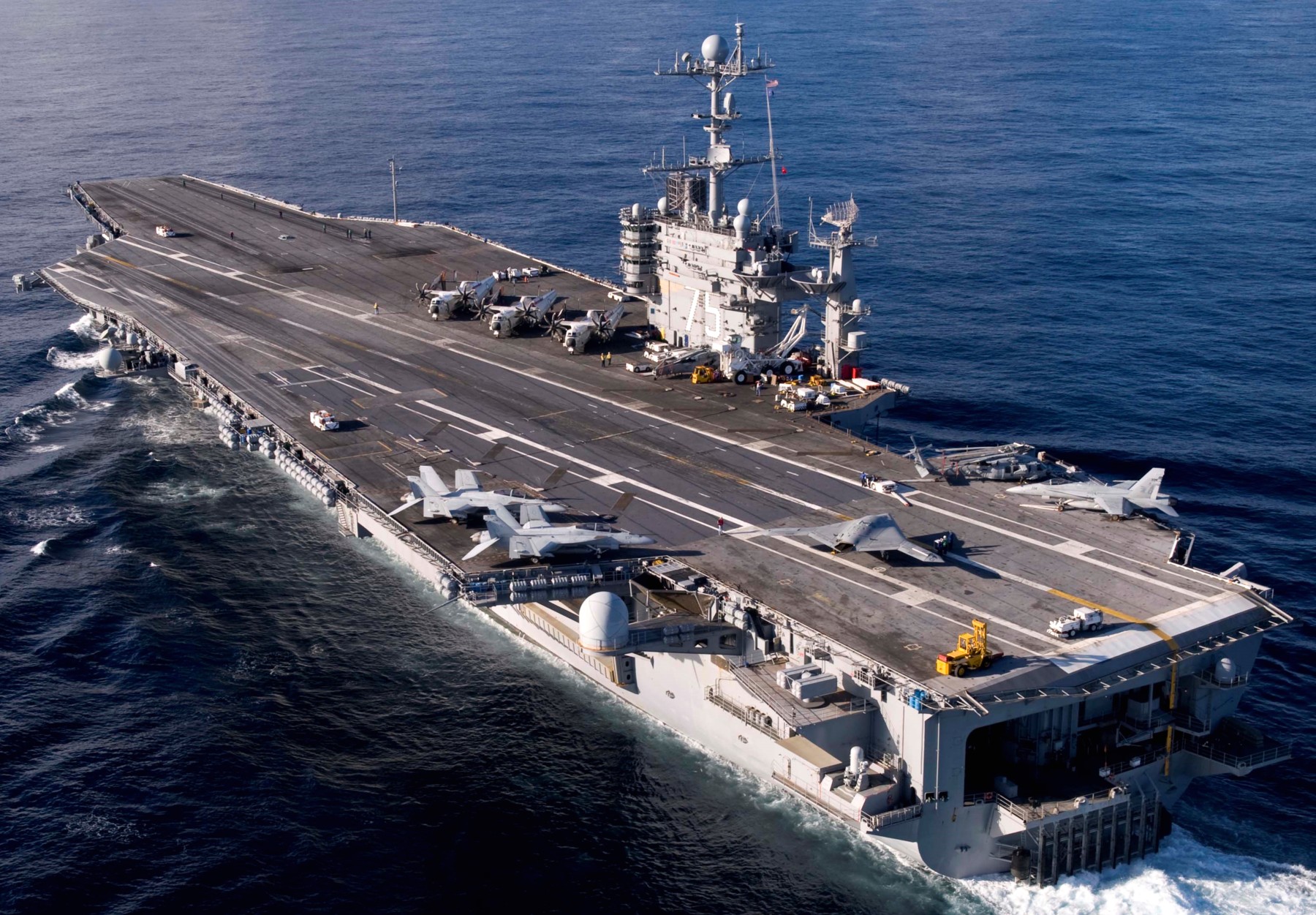 USS Harry S. Truman (CVN 75) 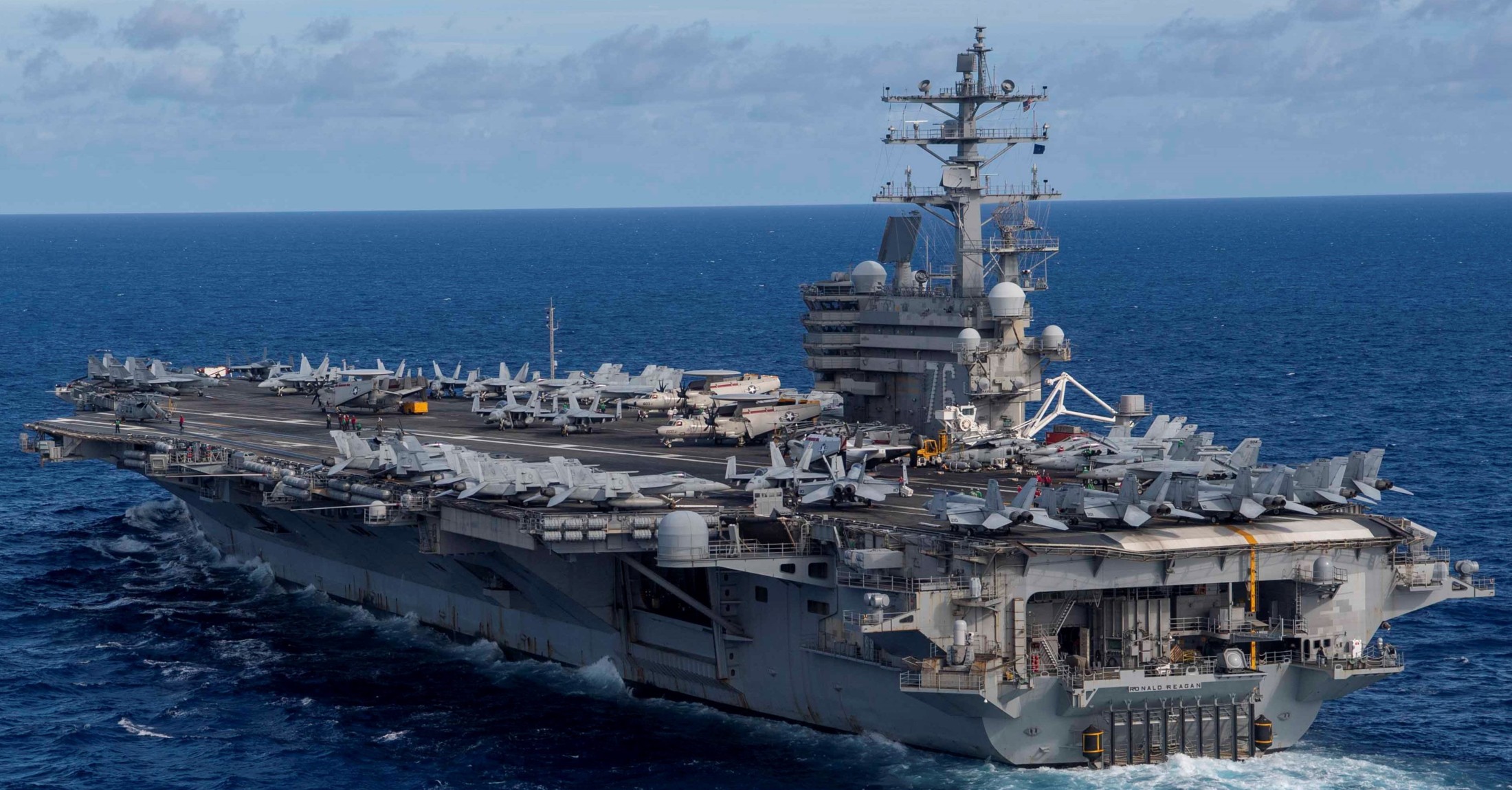 USS Ronald Reagan (CVN 76) 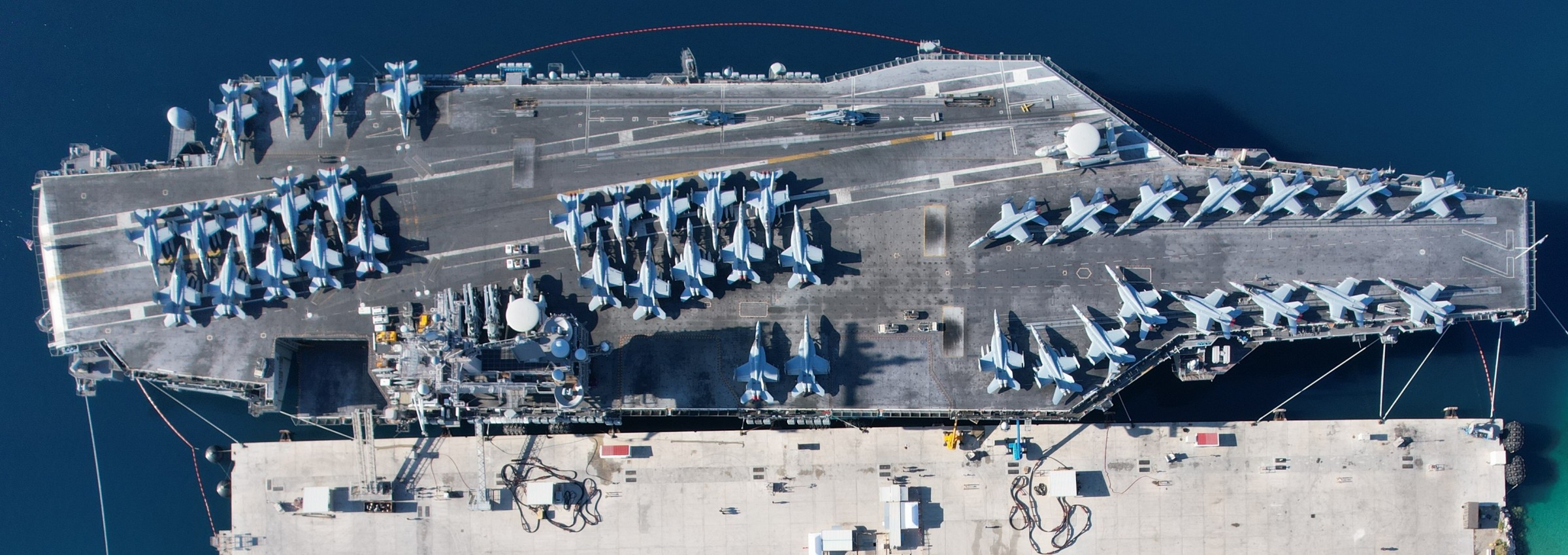 USS George H. W. Bush (CVN 77) |
|
| | seaforces.org | USN ships start page | |